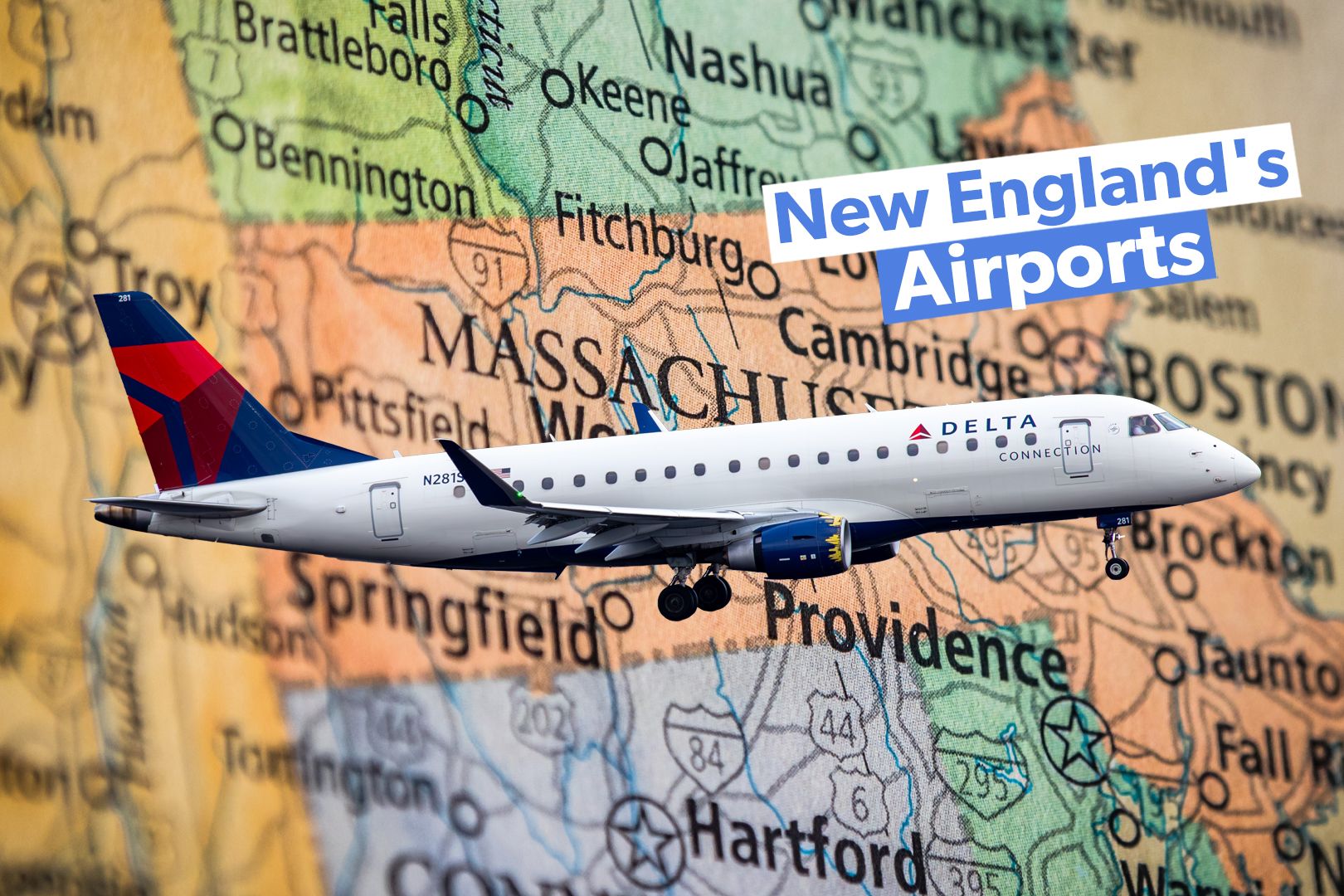
Quick Links Three airports with the region's highest passenger numbers Boston Logan Airport's unique standing T. F. Green Airport has come to serve more than just Rhode Island Bradley International Airport exists in a unique middle ground New England is an incredibly fascinating region when it comes to transportation.
The region is far more densely populated than almost any other in the United States, and is, as a result, uniquely served by public transportation in ways that cannot be observed anywhere else in the country. New England's airport system, which is defined by three hub airports , one in Massachusetts, Connecticut, and Rhode Island, operates differently than most in the United States. Get all the latest aviation news from Simple Flying! Boston Logan International Airport (BOS), Rhode Island's T.
F. Green Airport (PVD), and Connecticut's Bradley International Airport (BDL) handle a major portion of the passenger air travel traffic from New England to destinations beyond the region. With three facilities and uniquely extensive public transportation networks, the relationship between the three airports is rather unusual , and non-traditional factors influence which airport passengers will typically try to fly out of.
Furthermore, the advent of point-to-point flying has encouraged new airlines, including low-cost carriers like Breeze Airways, Spirit Airlines, and Southwest Airlines , to begin flying out of airports that go beyond the region's traditional "big three." This has significantly changed the air travel landscape in the region, especially for passengers from Maine, New Hampshire, or Vermont who were previously required to drive hours to the nearest airport that could offer even medium-haul flights, or settle for the higher fares of regional flights from United Airlines, American Airlines or Delta Air Lines. Let's take a deeper look at New England aviation, and exactly what makes the relationship between Boston Logan, T.
F. Green, and Bradley Airport so unique. Three airports with the region's highest passenger numbers It is difficult to determine exactly which airports are the most important in New England, but by looking at passenger numbers, one can determine which of these facilities are most critical for airlines looking to capture major segments of the New England air travel market.
According to the Federal Aviation Administration (FAA) , these are the passenger numbers for 2023 at each of these major facilities: Airport: 2023 Passenger Emplanements: % Change from 2022: Boston Logan International Airport (BOS) 19,962,678 14.44% Bradley International Airport (BDL) 3,122,212 9.75% Rhode Island T.
F. Green International Airport (PVD) 1,732,909 10.24% From these numbers alone, we can immediately determine a few key things.
For starters, Boston Logan is overwhelmingly the region's most important air transportation facility, which makes sense given the city's status as the largest in New England. Furthermore, we also know that commercial aviation at New England's most important airports is growing rapidly, with all three airports posting sizable increases in passenger numbers for 2023. Boston Logan Airport's unique standing With six runways, four passenger terminals , and two major passenger airlines using the facility as a hub, one cannot argue that there is a more important passenger airport within New England than Boston Logan.
It is also important to note that if you are looking to fly across the Atlantic or beyond (except for a few destinations served from other airports), you pretty much have to fly from Logan. Boston's primary airport is a surprisingly large battleground for major legacy airlines. Most hub airports in the United States have one airline that dominates traffic, with typically just one airline operating a legacy hub at the facility.
The largest airline serving Logan today is JetBlue, with a 30.17% market share last year. Delta Air Lines is one of the top three big operators in Boston.
Let's find out what advantages it boosts. Delta Air Lines, which operates a major legacy hub at the airport, only controls around 21.30% of the market.
American Airlines and United Airlines, neither of which have a Boston Logan hub, both also control more than 10% of passenger traffic, according to the Bureau of Transportation's statistics . With so few opportunities to gain a foothold in the New England market, airlines will prioritize serving Boston from as many destinations as possible, even if they do not operate a hub there. An affluent region, maintaining a good standing within New England states is critical for maintaining loyal fliers, who will typically open revenue-producing cobranded credit card accounts.
T. F. Green Airport has come to serve more than just Rhode Island Historically, Rhode Island's T.
F. Green Airport was primarily meant to just serve the small state, with mostly regional flights to and from the state capital, Providence. Today, however, the airline's purpose has shifted, with two major budget airlines completely transforming the airport.
Southwest Airlines and Breeze Airways now collectively account for over 45% of passenger traffic to and from Providence , serving destinations across the country from the relatively small airport. While these flights primarily focus on serving destinations in states like Florida or in the Caribbean, there are a few noteworthy long-haul point-to-point routes to destinations like: Los Angeles International Airport (LAX) Nashville International Airport (BNA) Denver International Airport (DEN) The airline has scheduled more than 4,000 passenger flights this month. Bradley International Airport exists in a unique middle ground For the millions that live within the suburban and urban corridor that stretches from Hartford up to the college towns of Northampton and Amherst in Massachusetts, Bradley International Airport in Windsor Locks, Connecticut serves as an ideal airport.
If you're looking to fly long-haul, you will have to travel either to New York or Boston, as legacy airlines still haven't seen enough demand to start up international flights from the airport. However, if you're looking to travel domestically to destinations in the Southeast or to some across the country, the airport will likely be your best bet. Budget airlines have slowly begun to identify the potential of the market served by Bradley Airport , with Breeze Airways, Frontier Airlines, Spirit Airlines, Sun Country Airlines, and Southwest Airlines all operating dozens of flights per week from the airport.
Avelo Airlines is also going to begin flying from the airport, with seven routes to destinations across the Southeast (as well as Cancun and Montego Bay) launching in the next two weeks..










